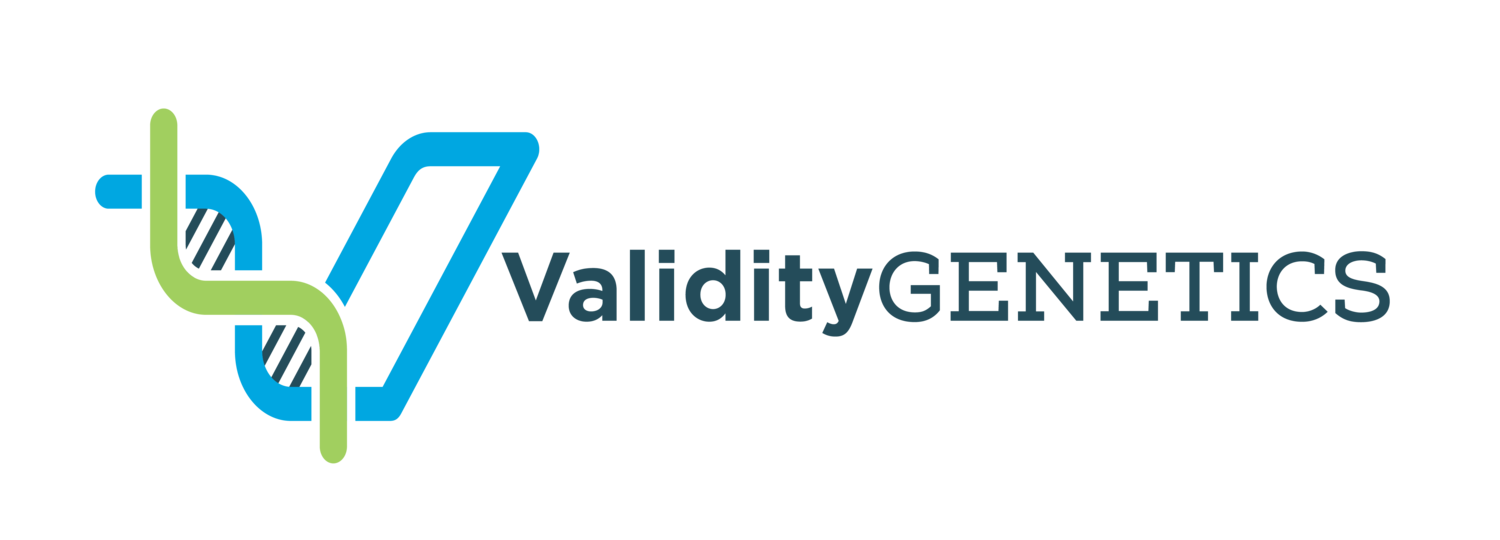Understanding Average Percent DNA Shared Between Relatives
DNA testing can reveal fascinating insights into our relationships, showing how closely we’re connected to family members through shared genetic material. But interpreting DNA results isn’t always straightforward. While DNA testing services, like Validity Genetics, can estimate the likely relationship between two people based on shared DNA percentages, there is significant variation in these values. Many relationships can share the same average percentage of DNA, and in some cases, their ranges overlap, making it difficult to identify an exact relationship based solely on shared DNA.
Average Percent DNA Shared for Different Relationships
Every relationship type has a typical range of shared DNA, reflecting the average amount of genetic material two people are likely to share. For example, siblings typically share about 50% of their DNA, while half-siblings might share closer to 25%. However, variations occur within each relationship type, as genetics are naturally variable and influenced by inheritance patterns. For example, a person sharing 17% of their DNA with someone else could indicate a variety of relationships: they might be half-siblings, aunts, nieces, grandparents, grandchildren, or even first cousins.
Why Percent DNA Shared Varies
The percentage of DNA shared between two individuals depends on how many segments of DNA overlap. These overlapping segments come from common ancestors, and the closer the relationship, the larger and more frequent these segments are likely to be. Additionally, shared DNA percentage can vary even among siblings due to the random inheritance of genes from each parent.
Interpreting DNA Relationships: More Than Just Percentages
While average DNA percentages provide a helpful starting point, DNA testing services go beyond just numbers. Companies like Validity Genetics use the pattern of shared DNA segments, along with factors like self-reported ages and connections with other relatives, to estimate the most probable relationship between two people. This means that, along with the percentage, the way DNA segments are distributed across the genome is a key factor in relationship predictions.
Overlapping Percentages and Relationship Ambiguity
One of the challenges in DNA interpretation is that certain relationships share overlapping DNA percentages. For instance, someone sharing 17% of their DNA with you could fit multiple relationships:
Aunt/Uncle
Niece/Nephew
Grandparent/Grandchild
Half-Sibling
First Cousin
This overlap means that while DNA tests can point toward probable relationships, they don’t always offer definitive answers based on percentages alone. This is where context—such as family history and other known connections—becomes invaluable in making sense of DNA test results.
Visualizing DNA Relationships: Average DNA Percentages Shared
Below is a chart that illustrates the average percentage of DNA shared across different types of relationships, as well as their potential overlap. This visual guide can help you better understand where certain relationships fit in terms of shared DNA and how percentages can overlap, adding context to your results.
Average DNA Percentage Shared With Relatives
DNA: Bonds of the Family
Understanding shared DNA percentages can offer meaningful insights into family connections. However, interpreting these results requires a nuanced view that considers both the average percentages and the overlapping ranges among different relationships. By combining shared DNA percentages with additional factors like segment patterns and known family connections, you can better understand the unique genetic bonds within your family.
Validity Genetics provides an incredible window into family history, but interpreting those results is as much about patterns and probabilities as it is about simple percentages. As you explore your own genetic connections, keep in mind that shared DNA tells a story that can sometimes be complex but always fascinating.



